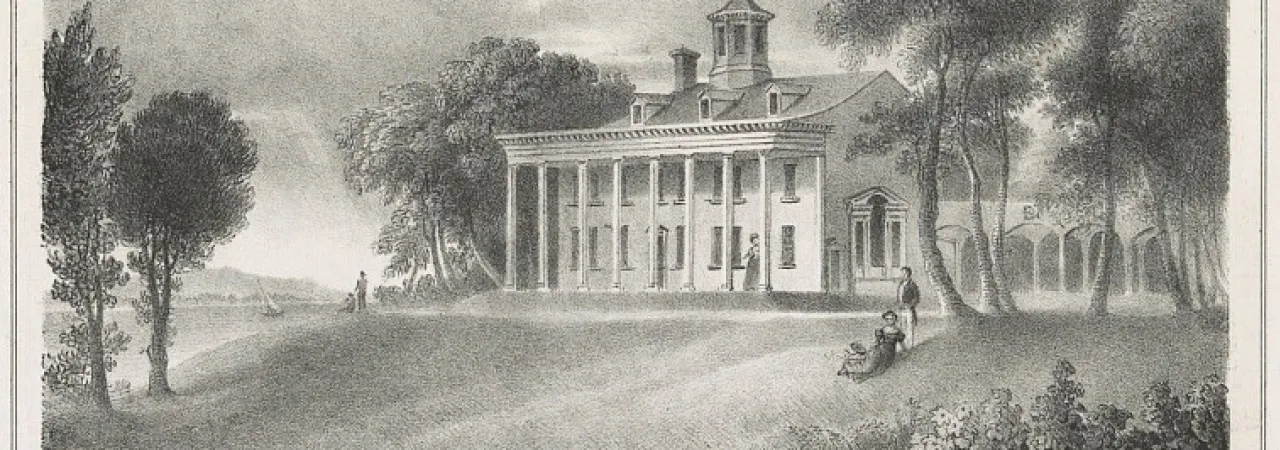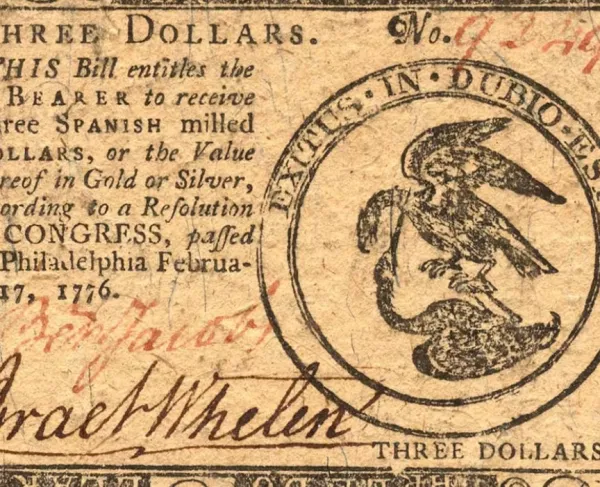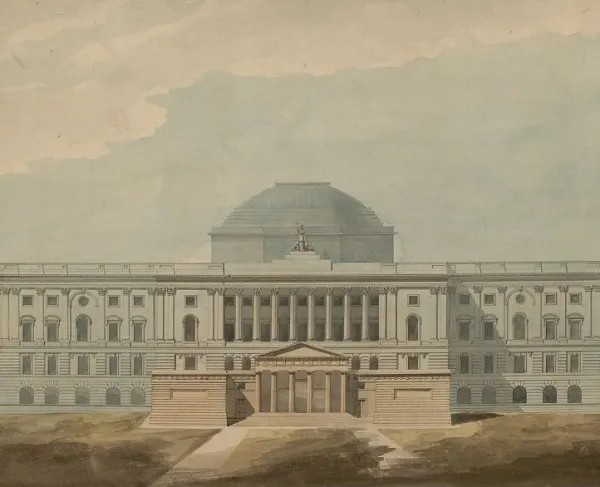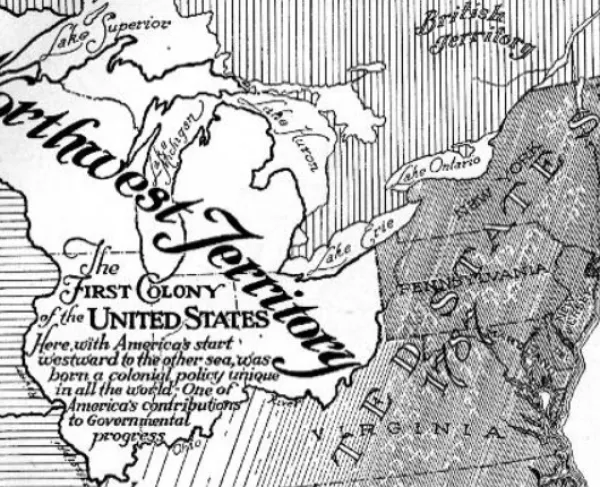
The Mount Vernon Conference and Annapolis Convention spotlighted the difficulties for states and government under the Articles of Confederation and became the launch points for the Philadelphia Convention, now better known as the Constitutional Convention. Growing from economic difficulties and conflicts over interstate commerce, these gatherings tried to solve immediate problems but ultimately revealed the greater challenges facing the fledgling nation politically and economically.
Following the end of the Revolutionary War with the Treaty of Paris in 1783, the United States went through an economic depression along with the struggles of finding the Articles of Confederation did not provide a strong enough government to protect national interests. States squabbled with each other over commerce, boundaries and waterways which created political division and limited markets. The Articles of Confederation could not impose commercial regulations on the states, so the states had to decide among themselves what would be allowed or restricted. Foreign trade slowed as access to the British empire ports was restricted. Loans to be repaid to the French and the Dutch hung over a country, already struggling with internal debts too.
Maryland and Virginia held a conference in 1785 in a dual-state attempt to solve their differences over navigational access along shared waterways. The Potomac River was of particular interest to both. The river flows into the Chesapeake Bay and forms the southern boundary of Maryland and the northern border of Virginia. So who had rights to the waterway? Who could develop it and towns along its banks for commerce? In 1784, Virginia and Maryland appointed commissioners to meet and discuss the waterways, with the conference to take place in March 1785.
Due to communication errors, Virginian commissioners did not arrive in Alexandria, Virginia, for the conference at the appointed time. George Washington heard that the Maryland commissioners were waiting in the nearby town and offered the hospitality of his home—Mount Vernon—for their use. Mount Vernon overlooks the Potomac River, and Washington had an interest in the success of the conference since he was president of the Potomac Company, a private company planning navigation improvements along the river. George Washington was not formally involved in the proceedings, but since the conference ended up at his home, his knowledge of the river and influence for desiring commerce navigation likely had an effect. Writing privately about his hopes for waterway commerce along the Potomac, Washington had previously shared: “This is no Utopean Scheme. It wants but a beginning.” In some ways a beginning started at his home—but the beginning of something larger than commerce along the river.
When the Virginia commissioners finally arrived, the meeting had amiable results. On March 28, 1785, the Mount Vernon Compact was drafted. It presented thirteen points concerning the Potomac River, Pocomoke River and Chesapeake Bay and covered navigation, tolls, commercial regulations, fishing rights and collection of debts. Additionally, the attendees prepared a letter to Pennsylvania, describing their hopes to navigate through Pennsylvania’s river holdings all the way to the Ohio River and petitioning for limited tolls or paid duties. After the conference, Marylanders reached out to Delaware and encouraged that state to consider joining the Mount Vernon Compact’s precedents for interstate regulations relating to the Chesapeake Bay. Meanwhile, the Virginians and the Marylanders took the compact back to their state legislatures for ratification or agreement. When it passed in both cooperating states, the Mount Vernon Compact became a symbol of states collaborating to find solutions for commerce and their economies rather than feuding over the waterways.
The Mount Vernon Conference had a successful outcome with its goals for Virginia and Maryland’s navigational commerce. The conference also set an important precedence for states to assemble to handle issues of mutual interest that were not addressed by Congress operating under the Articles of Confederation. Since interstate commerce debates plagued many states, efforts emerged to bring more states together for a larger discussion about the topic; the Annapolis Convention was the result.
The Annapolis Convention took place in September 1786. In January of that year, Virginia formally invited the other twelve states send delegates to Annapolis, Maryland, with the goal of discussing “the trade and commerce of the United States” and thinking bout “how far a uniform system in…commercial intercourse and regulations might be necessary to their common interest and permanent harmony.” Following the precedent of the Mount Vernon Conference, this convention was supposed to bring states together to find an agreement about or around commerce issues that the Articles of Confederation did not solve.
When the convention met at the appointed time and place, only twelve delegates from five states arrived. Of the other eight states, four had appointed delegates but no one knew if they were en route or not, and four states decided not to participate. Among the delegates that arrived, there was a lack of clarity if any resolutions they prepared had to be approved by the states or by Congress under the Articles of Confederation. This uncertainty made the Annapolis Convention delegates hesitant that they could accomplish something that would be lasting and meaningful for their states and the country.
Eventually, on September 14, 1786, Alexander Hamilton presented an address and the group agreed to circulate it to all the states. The lack of response and delegates at the Annapolis Convention revealed the reluctance of states to work together. However, it also laid the groundwork for assembling a large convention in Philadelphia during September 1787 with the acknowledged purpose of considering revisions to the Articles of Confederation for the greater good of the states and the nation.
The Mount Vernon Conference had been an example of success between two states settling a commercial conflict. The Annapolis Convention showed the challenges of getting states to send delegates and cooperate for a larger solution. The advocates for the Philadelphia Convention hoped, wrote letters and pressured to get enough delegates to the 1787 gathering, especially trying to convince George Washington to attend as a leading delegate. Both the Mount Vernon Conference and the Annapolis Convention were important moments on the road to the Philadelphia Convention that became the Constitutional Convention and the drafting of a new governing document for the United States.
Further Reading:
- The Return of George Washington: 1783-1789 by Edward J. Larson (William Morrow/Harper Collins Publishers, 2014)


